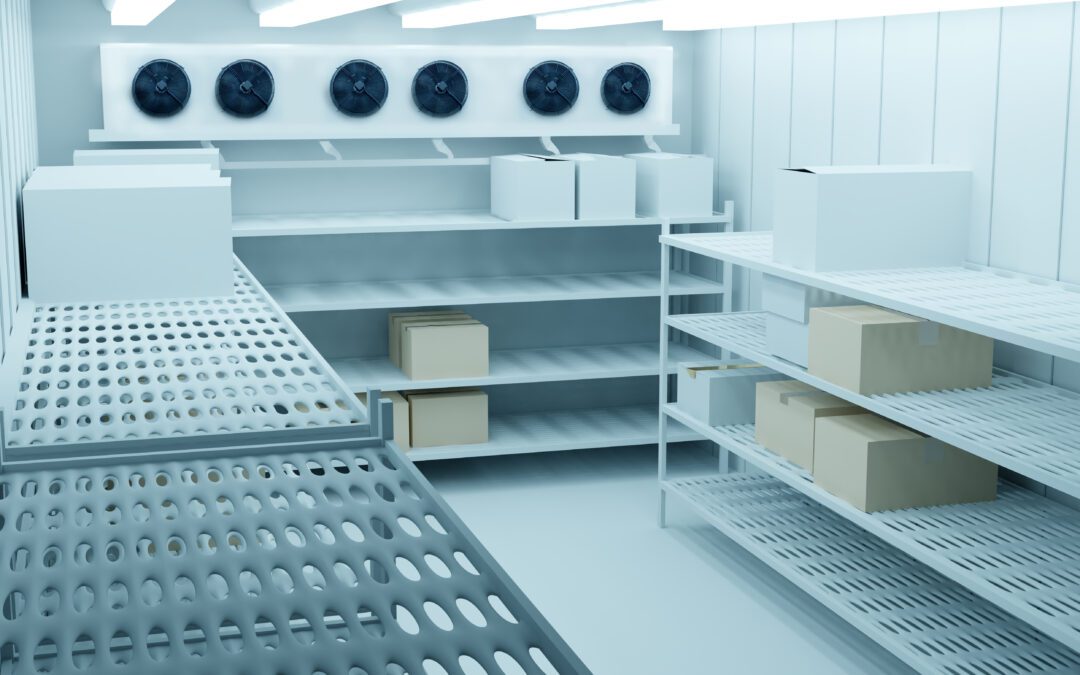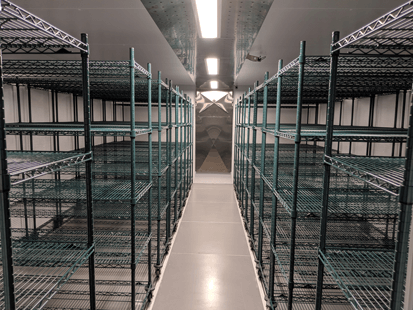When planning your temperature and humidity control chamber, there are many factors that may be considered in order to ensure that every detail meets the specifications for the intended purpose of the unit. Thinking about these details and communicating your stability needs will have you standing a better chance at complying with industry guidelines, such as ICH stability guidelines or TAPPI standards, and reducing failures.
What is Accelerated Shelf Life Testing?
Accelerated shelf life testing is a form of stability testing in which a product is stored at elevated stress conditions to rapidly increase the rate of deterioration. By studying the product at exaggerated temperature and humidity conditions over predetermined lengths of time, scientists can make predictions on the shelf life of the product at its expected conditions and assign it an expiration date. For example, if a product holds stable at 40℃/75% RH for the duration of a six-month accelerated study, it can be assigned a shelf life of 24 months. One of the key benefits of accelerated shelf life testing is that it can help expedite the process of bringing a product to the market for consumers. However, long term stability studies should be carried out in conjunction with accelerated testing to verify the prediction and obtain real time data. Accelerated shelf life testing may be used for pharmaceuticals, food products, medical devices, and more. Read more about stability testing here.
Here are a few considerations when purchasing your stability chamber that can set you up for a successful shelf-life test:
What type of stability chamber fits your needs for accelerated shelf life testing?
There are many types of stability control units to fit your unique humidity and temperature storage needs. Some common types of humidity chambers include: Large walk-in chambers, smaller reach-in chambers, and bench top chambers. Considerations such as the nature of the product you’re storing, the specified RH and temperature tolerances your product will need to be stored at, and who will need to access the unit can help you evaluate which type of humidity chamber is the best fit for accelerated shelf life testing.
What is the method of temperature and relative humidity generation you plan to use?
There are four types of methods for temperature and humidity generation:
- Steam Generation
- Atomizer
- Water Bath
- Two Temperature
Each of these methods comes with benefits and limitations.
| Method | Benefits | Limitations |
|---|---|---|
| Steam Generation |
|
|
| Atomizer |
|
|
| Water Bath |
|
|
| Two Temperature |
|
|
The “Three C’s”
In stability storage, the “three c’s” are”:
Control – The programmable logical microprocessor puts you in control of the chamber. A single multifunction keypad is used for all setpoints.
Conditioning – Chamber must have uniform distribution of temperature and humidity throughout the interior and capable of recovery from Open Door and Power Downs.
Construction – Foamed in place insulation for low heat transfer, enamel exterior finish, stainless interior for easy cleaning, self-closing key lock doors, thermostatically controlled anti-condensate heater wire for door gasket.
Ensure Product Longevity with Our Stability Chambers!
Delve into our Stability Chambers tailored for pharmaceuticals, where precision meets durability. Perfect your accelerated shelf life testing with our chambers that offer rigorous condition control in line with ICH guidelines.
Ranges
The two types of ranges for consideration in stability storage are temperature range and humidity range. Temperature range may impact chamber design e.g., structure and insulation. Since humidity range is dependent on water vapor pressure at low temperature, the system may achieve high relative humidity with less water vapor. On the other hand, more water vapor is required at higher temperature to attain high relative humidity.
Note: RH range is achieved by a certain temperature as
demonstrated in the range curve. For instance, the lowest humidity level the chamber can go at 20°C is 40%RH. At a temperature of 60°C the chamber can attain 10%RH.
You must operate the chamber within the range set by the manufacturer.
Dimensions
Most misunderstand that the chamber’s performance is not dependent on the space if the product can fit into the chamber, regardless of the size of the product. It is important to know that the chamber must have sufficient airflow volume to ensure effective airflow and uniformity within the chamber. A good rule is a 1:3 ratio of object(s) under test to empty space. It’s better to purchase a slightly bigger chamber than one that is too small, but being mindful of optimizing chamber size (especially for walk-ins) can help you avoid overpaying for space you will not use.
Installation Location
The location of your temperature controlled chamber will impact its performance. Some good questions to ask when installing your unit include:
- Is there adequate power?
- Is there access to an acceptable water supply?
- When the unit arrives, will it fit through the door?
- Is the ambient condition where the chamber will be installed controlled?
- What is the site access?
- Do you require fire suppression systems?
Optional Features
Communicating the optional features you may want to include on your unit can ensure the best fit for your needs. Some common options you may want to explore include:
- Shelving
- Interior lighting requirements
- Door heat
- UPS backup for controls
- Larger doors
Stability, Accuracy, and Monitoring
Whichever type of chamber you are using, it is your responsibility to ensure that it is maintaining the required temperature and humidity over the duration of the study. This is crucial when complying with ICH or FDA stability guidelines. If a failure occurs, there must be documented evidence that this happened. This requires continuous monitoring.
Validation
Validation is establishing by objective evidence that a process consistently produces a result or product meeting its predetermined specifications.
There are 4 categories to consider when making sure your unit fits qualification standards:
1.Installation Qualification
- Chamber and components are correctly installed
- Presents of documentation
- Utility verification
- Critical parts
- Calibrations
2.Operational Qualification
- Chamber individual functions tested
- Alarms
- Open Door Recovery
- Simulated Power Loss Recovery
- 24-Hour Empty Uniformity Mapping
- Single or multiple set-points
3. Performance Qualification
- 24 Hour “loaded” Chamber Uniformity Mapping
- Single or multiple set-points
4. Final Summary Report
- Complete technical summary
- All test cases performed during the validation
- Including all test case results, deviations, and resolutions.
References
ICH (International Conference on Harmonisation of Technical Requirements for Registration of Pharmaceuticals for Human Use) Q1A (R2) – “Stability Testing of New Drug Substances and Products”, 2003
FDA (Food and Drug Administration) CFR 21 Section 211.63 – “Equipment design, size, and location”, 2010
FDA CFR 21 Section 211.166 -”Stability Testing”, 2010
WHO (World Health Organization) – “Temperature and Humidity Monitoring Systems for Fixed Storage Areas”, 2014


